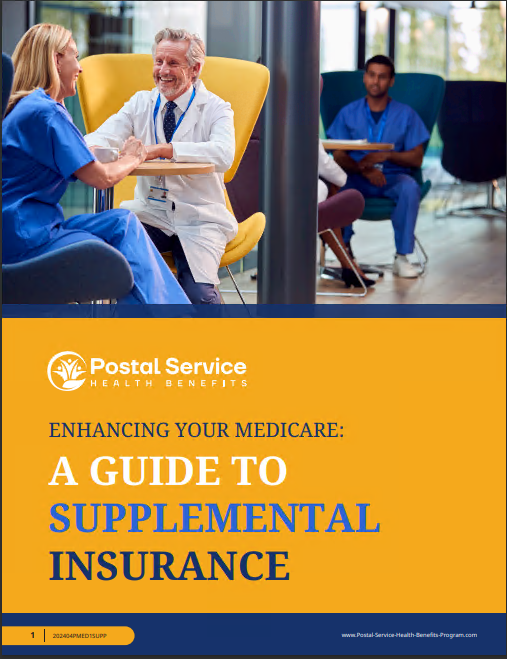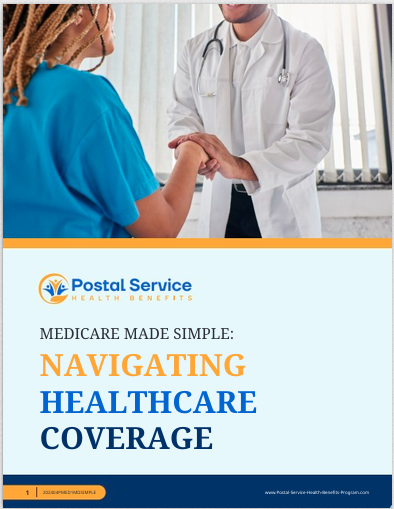Chapter 1: Understanding Medicare – An Overview
1.1 What is Medicare?
Medicare is a federal health insurance program primarily designed for individuals aged 65 and older, as well as for certain younger people with disabilities and those with end-stage renal disease (ESRD). Established in 1965, Medicare provides coverage for various medical services, including hospital stays, doctor visits, preventive care, and prescription drugs.
Medicare is administered by the Centers for Medicare & Medicaid Services (CMS), a federal agency within the Department of Health and Human Services (HHS).
1.2 Who is eligible for Medicare?
Medicare eligibility is primarily based on age and disability status:
- Individuals aged 65 and older: Most people become eligible for Medicare when they turn 65, regardless of their income or medical history.
- Younger people with disabilities: Individuals under 65 may qualify for Medicare if they have been receiving Social Security Disability Insurance (SSDI) or Railroad Retirement Board (RRB) disability benefits for at least 24 months.
- People with end-stage renal disease (ESRD): Individuals of any age with ESRD, such as those requiring regular dialysis or a kidney transplant, are eligible for Medicare.
- People with amyotrophic lateral sclerosis (ALS): Individuals diagnosed with ALS are eligible for Medicare immediately upon receiving disability benefits, without the standard waiting period.
1.3 Different Parts of Medicare
Medicare is divided into several parts, each covering specific services:
- Medicare Part A (Hospital Insurance): Part A covers inpatient hospital care, skilled nursing facility care, hospice care, and some home health services. Most beneficiaries receive Part A coverage automatically upon turning 65, provided they or their spouse have paid Medicare taxes while employed.
- Medicare Part B (Medical Insurance): Part B covers doctor visits, outpatient care, preventive services, and durable medical equipment. Beneficiaries must enroll in Part B during their Initial Enrollment Period (IEP) to avoid late enrollment penalties unless they are eligible for a Special Enrollment Period (SEP).
- Medicare Part C (Medicare Advantage): Part C allows private insurance companies to offer Medicare-approved plans that provide all Part A and Part B benefits, often including additional benefits like prescription drug coverage and dental services.
- Medicare Part D (Prescription Drug Coverage): Part D provides prescription drug coverage to help beneficiaries afford the cost of medications. Private insurance companies approved by Medicare offer Part D plans, which can be purchased as standalone plans or as part of Medicare Advantage plans.
Understanding the basics of Medicare and its various components is essential for making informed decisions about your healthcare coverage. In the following chapters, we’ll delve deeper into each part of Medicare, exploring coverage, enrollment processes, costs, and other essential details to help you navigate the Medicare system effectively.
Chapter 2: Medicare Part A – Hospital Insurance
2.1 Coverage and Benefits
Medicare Part A offers a range of coverage and benefits to eligible beneficiaries, including:
- Inpatient Hospital Care: Part A covers semi-private rooms, meals, general nursing, and other hospital services and supplies when admitted as an inpatient. This includes necessary hospital stays related to surgeries, treatments, or medical conditions.
- Skilled Nursing Facility Care: Part A covers care in a skilled nursing facility (SNF) under certain conditions, typically following a qualifying hospital stay. This includes skilled nursing care, rehabilitation services, and other medically necessary services.
- Hospice Care: Part A provides coverage for hospice care for beneficiaries with a terminal illness who have a life expectancy of six months or less. Hospice services may include pain relief, symptom management, and emotional and spiritual support for both the beneficiary and their family.
- Home Health Care Services: Part A covers medically necessary home health care services, such as skilled nursing care, physical therapy, occupational therapy, speech-language pathology services, and home health aide services. To qualify, beneficiaries must meet specific criteria and receive care from a Medicare-certified home health agency.
Understanding the coverage and benefits of Medicare Part A is crucial for beneficiaries to ensure they receive the necessary care and services when needed. By familiarizing themselves with the covered services and eligibility criteria, postal workers and retirees can make informed decisions about their healthcare needs and access the appropriate services under Medicare Part A.
2.2 Enrollment Process
For most individuals, enrollment in Medicare Part A is automatic and occurs upon reaching the eligibility age, which is typically age 65. Individuals who are already receiving Social Security benefits or Railroad Retirement Board (RRB) benefits are automatically enrolled in Medicare Part A and Part B.
However, individuals who are not automatically enrolled in Medicare Part A may need to sign up during their Initial Enrollment Period (IEP), which begins three months before the month of their 65th birthday, includes their birthday month, and extends for three months after their birthday month. This seven-month period provides individuals with the opportunity to enroll in Medicare Parts A and B without incurring late enrollment penalties.
Additionally, individuals who delay enrollment in Medicare Part A beyond their IEP may sign up during the General Enrollment Period (GEP), which occurs annually from January 1 to March 31. However, late enrollment penalties may apply for individuals who delay enrollment unless they qualify for a Special Enrollment Period (SEP) due to certain circumstances, such as continuing to work past age 65 and having employer-sponsored health coverage.
Understanding the enrollment process for Medicare Part A is essential for postal workers and retirees to ensure timely enrollment and avoid potential penalties or gaps in coverage. By adhering to enrollment deadlines and requirements, individuals can access Medicare Part A benefits when needed and maintain comprehensive healthcare coverage.
To enroll in Medicare Part A, you can:
- Apply online through the Social Security Administration‘s website.
- Visit your local Social Security office.
- Call Social Security at 1-800-772-1213 (TTY 1-800-325-0778).
2.3 Costs and Fees
While Medicare Part A typically does not involve a premium for most individuals (provided they or their spouse have paid Medicare taxes during employment), there are other considerations regarding coverage:
- Deductibles: Medicare Part A requires a deductible to be met before coverage for hospital stays and certain services.
- Coinsurance: Following the deductible, individuals may still be responsible for coinsurance costs for hospital stays beyond a specific number of days.
- Additional Costs: Depending on the services received, there might be additional expenses, such as copayments for specific services or charges for services not covered by Medicare.
Understanding the coverage, enrollment process, and financial aspects associated with Medicare Part A is crucial for effectively utilizing healthcare benefits.
Chapter 3: Medicare Part B – Medical Insurance
3.1 Coverage and Benefits
Medicare Part B, also known as Medical Insurance, covers medically necessary services such as doctor visits, outpatient care, preventive services, and durable medical equipment. Here’s an overview of what Medicare Part B covers:
Doctor Visits: Medicare Part B covers visits to doctors, specialists, and other healthcare providers.
Outpatient Care: This includes services received in a hospital outpatient setting, such as outpatient surgeries, diagnostic tests, and outpatient rehabilitation services.
Preventive Services: Medicare Part B covers a wide range of preventive services, including screenings for cancer, cardiovascular disease, diabetes, and certain vaccines.
Durable Medical Equipment (DME): Medicare covers medically necessary DME, such as wheelchairs, walkers, and oxygen equipment, that your doctor prescribes for use at home.
3.2 Enrollment Process
Enrollment in Medicare Part B is typically not automatic and requires active participation from eligible individuals. The enrollment process for Part B generally occurs during the Initial Enrollment Period (IEP) or during a Special Enrollment Period (SEP) for qualifying individuals.
During the Initial Enrollment Period, which begins three months before the individual’s 65th birthday month and extends for three months afterward, eligible individuals can enroll in Part B through the Social Security Administration (SSA) website, by visiting a local SSA office, or by calling the SSA toll-free number.
For individuals who delay enrollment in Part B because they have health coverage through an employer or union group health plan, a Special Enrollment Period (SEP) is available to enroll in Part B without facing late enrollment penalties once their existing coverage ends.
To enroll in Medicare Part B, you can:
- Apply online through the Social Security Administration’s website.
- Visit your local Social Security office.
- Call Social Security at 1-800-772-1213 (TTY 1-800-325-0778).
3.3 Costs and Fees
While most beneficiaries pay a standard premium for Medicare Part B coverage, there may be other costs and fees associated with Part B, including:
- Monthly Premium: Most beneficiaries pay a monthly premium for Medicare Part B coverage, which is determined based on their income. Higher-income beneficiaries may pay an Income-Related Monthly Adjustment Amount (IRMAA) in addition to the standard premium.
- Annual Deductible: Beneficiaries are responsible for paying an annual deductible before Medicare Part B coverage begins.
- Coinsurance and Copayments: After the deductible is met, beneficiaries typically pay a coinsurance or copayment for covered services and supplies, usually 20% of the Medicare-approved amount.
Understanding these costs and fees associated with Medicare Part B is essential for beneficiaries to budget and plan for their healthcare expenses effectively.
Chapter 4: Medicare Part C – Medicare Advantage Plans
4.1 What is Medicare Advantage?
Medicare Part C, or Medicare Advantage, is an alternative way to receive Medicare benefits through private insurance companies approved by Medicare. These plans must provide at least the same level of coverage as Original Medicare (Medicare Part A and Part B). However, they often include additional benefits such as prescription drug coverage, dental care, vision care, and fitness programs.
4.2 Coverage and Benefits
Medicare Advantage plans offer comprehensive coverage and benefits that may vary depending on the specific plan. Common coverage and benefits include:
- Medical Services: Medicare Advantage plans cover doctor visits, hospital stays, outpatient care, preventive services, and other medically necessary services.
- Prescription Drug Coverage: Many Medicare Advantage plans include prescription drug coverage (Part D) as part of their benefits package, providing access to a wide range of medications at affordable prices.
- Additional Benefits: Some Medicare Advantage plans offer additional benefits beyond what traditional Medicare covers, such as dental care, vision care, hearing aids, wellness programs, and transportation services to medical appointments.
4.3 Enrollment Process
Enrollment in Medicare Advantage plans typically occurs during specific enrollment periods, including:
- Initial Enrollment Period (IEP): Individuals who are newly eligible for Medicare can enroll in a Medicare Advantage plan during their Initial Enrollment Period, which begins three months before their 65th birthday month and extends for three months afterward.
- Annual Enrollment Period (AEP): The Annual Enrollment Period, also known as the Open Enrollment Period, occurs annually from October 15th to December 7th. During this time, individuals can enroll in, switch, or disenroll from Medicare Advantage plans.
- Special Enrollment Periods (SEP): Special Enrollment Periods are available to individuals who experience certain qualifying events, such as moving to a new area with different plan options, losing employer-sponsored coverage, or becoming eligible for Medicaid.
Beneficiaries should carefully review their options and consider their healthcare needs when selecting a Medicare Advantage plan.
Conclusion
Medicare Part C, or Medicare Advantage, offers beneficiaries an alternative way to receive Medicare benefits through private insurance plans. These plans provide comprehensive coverage, including medical services, prescription drug coverage, and additional benefits not typically covered by traditional Medicare. Understanding what Medicare Advantage is, the coverage and benefits it offers, and the enrollment process empowers beneficiaries to make informed decisions about their healthcare coverage. In the following chapters, we’ll explore Medicare Part D (Prescription Drug Coverage) and other aspects of the Medicare program.
Chapter 5: Medicare Part D – Prescription Drug Coverage
5.1 Understanding Part D Coverage
Medicare Part D offers prescription drug coverage to help beneficiaries afford the cost of medications. Part D plans are offered by private insurance companies approved by Medicare and vary in terms of coverage, costs, and formularies (the list of covered drugs).
Part D coverage typically includes:
- Retail Prescription Drugs: Coverage for prescription medications obtained from retail pharmacies, including brand-name and generic drugs.
- Mail-Order Prescriptions: Many Part D plans offer the option to obtain prescriptions through mail-order pharmacies, often at lower costs and with the convenience of home delivery.
- Preferred Pharmacy Networks: Some Part D plans may have preferred pharmacy networks, where beneficiaries can access lower copayments or coinsurance by using designated pharmacies within the network.
- Coverage Gap (Donut Hole): Beneficiaries may enter the coverage gap, also known as the “donut hole,” after reaching a certain threshold in drug costs. During this phase, they may be responsible for a higher percentage of their medication costs until they reach catastrophic coverage.
Understanding the coverage provided by Part D plans helps beneficiaries select a plan that meets their prescription drug needs.
5.2 Enrollment Process
Enrollment in Medicare Part D is optional but highly encouraged, especially for beneficiaries who take prescription medications regularly. The enrollment process typically occurs during specific enrollment periods, including:
- Initial Enrollment Period (IEP): Beneficiaries can enroll in a Part D plan during their Initial Enrollment Period, which is the same as their Initial Enrollment Period for Medicare Parts A and B. This period begins three months before their 65th birthday month and extends for three months afterward.
- Annual Enrollment Period (AEP): The Annual Enrollment Period takes place annually from October 15th to December 7th. During this time, beneficiaries can enroll in, switch, or disenroll from Part D plans.
- Special Enrollment Periods (SEP): Special Enrollment Periods are available to beneficiaries who experience certain qualifying events, such as moving to a new area with different plan options, losing employer-sponsored coverage, or becoming eligible for Medicaid.
Beneficiaries should review their current medications and compare Part D plans to find one that offers the best coverage and value for their needs.
5.3 Costs and Fees
While Part D plans vary in terms of costs and fees, beneficiaries can generally expect to pay the following:
- Monthly Premium: Most Part D plans charge a monthly premium, which can vary depending on the plan’s coverage and the beneficiary’s income.
- Annual Deductible: Some Part D plans have an annual deductible that beneficiaries must meet before the plan begins to pay for prescription drugs.
- Copayments or Coinsurance: Beneficiaries are responsible for paying a portion of the cost of each prescription medication, either through copayments (a fixed amount) or coinsurance (a percentage of the drug’s cost).
- Coverage Gap (Donut Hole): Beneficiaries may enter the coverage gap after reaching a certain threshold in drug costs, where they are responsible for a higher percentage of their medication costs until they reach catastrophic coverage.
Understanding the costs and fees associated with Part D helps beneficiaries budget for their prescription drug expenses effectively.
In this chapter, we’ve explored Medicare Part D, which provides essential prescription drug coverage to Medicare beneficiaries. By understanding the coverage, enrollment process, and costs associated with Part D, beneficiaries can make informed decisions about their prescription drug coverage and access the medications they need to maintain their health and well-being.
Chapter 6: Comparing Original Medicare vs. Medicare Advantage
6.1 Pros and Cons of Original Medicare
Pros:
- Broad Coverage: Original Medicare (Parts A and B) provides broad coverage for hospital stays, doctor visits, and medical services, offering beneficiaries access to a wide range of healthcare providers nationwide.
- Freedom to Choose Providers: With Original Medicare, beneficiaries have the flexibility to choose their healthcare providers, specialists, and hospitals without needing referrals, providing greater autonomy in managing their healthcare.
- Predictable Costs: While Original Medicare has deductibles, coinsurance, and copayments, these costs are typically more straightforward and predictable compared to Medicare Advantage plans, which may have varying copayments and coinsurance amounts.
Cons:
- Lack of Prescription Drug Coverage: Original Medicare does not include coverage for prescription drugs (Part D), so beneficiaries must purchase a standalone Part D plan to obtain this coverage, potentially leading to higher out-of-pocket costs.
- No Out-of-Pocket Maximum: Original Medicare does not have an annual out-of-pocket maximum, meaning beneficiaries could face significant costs if they require extensive medical care or services in a given year.
- Need for Supplemental Coverage: Many beneficiaries choose to purchase supplemental coverage, such as a Medicare Supplement Insurance (Medigap) policy, to help cover out-of-pocket costs not covered by Original Medicare, which can add to monthly premiums.
6.2 Pros and Cons of Medicare Advantage
Pros:
- All-in-One Coverage: Medicare Advantage plans (Part C) often include coverage for hospital stays, doctor visits, prescription drugs, and additional benefits like dental, vision, and hearing services, providing comprehensive healthcare coverage in a single plan.
- Predictable Costs: Medicare Advantage plans typically have annual out-of-pocket maximums, limiting the amount beneficiaries have to spend on healthcare services in a given year and providing greater financial predictability.
- Additional Benefits: Many Medicare Advantage plans offer extra benefits not covered by Original Medicare, such as gym memberships, wellness programs, and transportation services, enhancing the overall value of the plan.
Cons:
- Network Restrictions: Medicare Advantage plans often have provider networks, and beneficiaries may be required to use network providers to receive full coverage for services, potentially limiting choice and flexibility in healthcare providers.
- Prior Authorization Requirements: Some Medicare Advantage plans may require prior authorization for certain services, procedures, or medications, which can delay access to care and require additional administrative steps.
- Service Area Limitations: Medicare Advantage plans may have service area limitations, meaning beneficiaries may not have coverage if they move or travel outside of the plan’s designated service area.
6.3 Factors to Consider
When comparing Original Medicare and Medicare Advantage, beneficiaries should consider the following factors:
- Healthcare Needs: Assess individual healthcare needs, including prescription drug usage, frequency of doctor visits, and the need for additional benefits like dental, vision, and hearing coverage.
- Provider Preferences: Consider preferences for healthcare providers, specialists, and hospitals, and determine whether network restrictions in Medicare Advantage plans align with those preferences.
- Budget and Financial Considerations: Evaluate monthly premiums, deductibles, copayments, coinsurance, and annual out-of-pocket maximums to determine the overall cost of each option and its affordability.
- Flexibility and Autonomy: Determine the importance of freedom to choose healthcare providers and the ability to access care without needing referrals, as offered by Original Medicare.
- Additional Benefits: Consider the value of extra benefits offered by Medicare Advantage plans, such as dental, vision, and hearing coverage, gym memberships, and wellness programs.
By carefully considering these factors, beneficiaries can make an informed decision about whether Original Medicare or Medicare Advantage is the best fit for their healthcare needs and preferences.
In this chapter, we’ve compared Original Medicare and Medicare Advantage, highlighting the pros and cons of each option and providing guidance on factors to consider when choosing between them. This comparison empowers beneficiaries to select the Medicare coverage that best meets their individual needs and preferences, ensuring access to quality healthcare and peace of mind in their retirement years.
Chapter 7: Understanding Medigap – Supplemental Insurance Plans
7.1 What is Medigap?
Medigap, or Medicare Supplement Insurance, is private health insurance designed to supplement Original Medicare (Parts A and B) coverage. These plans are standardized by the federal government and offered by private insurance companies, providing beneficiaries with additional coverage for out-of-pocket costs such as deductibles, coinsurance, and copayments.
7.2 Coverage and Benefits
Medigap plans offer various coverage options, depending on the specific plan chosen. Common benefits provided by Medigap plans may include:
- Coverage of Medicare Part A Coinsurance and Hospital Costs: Some Medigap plans cover Part A coinsurance and hospital costs for up to an additional 365 days after Medicare benefits are exhausted.
- Coverage of Medicare Part B Coinsurance or Copayments: Certain Medigap plans cover Part B coinsurance or copayments for doctor visits and outpatient services.
- Coverage of Blood: Some Medigap plans cover the first three pints of blood needed for a medical procedure.
- Coverage of Hospice Care Coinsurance or Copayments: Certain Medigap plans cover Part A hospice care coinsurance or copayments.
- Skilled Nursing Facility Care Coinsurance: Certain Medigap plans cover skilled nursing facility care coinsurance under Medicare Part A.
Understanding the coverage and benefits offered by Medigap plans helps beneficiaries choose the plan that best meets their healthcare needs and financial situation.
7.3 Enrollment Process
The enrollment process for Medigap plans typically occurs during specific enrollment periods, including:
- Open Enrollment Period (OEP): The Open Enrollment Period for Medigap plans begins when beneficiaries are both 65 years old and enrolled in Medicare Part B. During this period, which lasts for six months, beneficiaries have guaranteed issue rights, meaning insurance companies cannot deny coverage or charge higher premiums based on pre-existing conditions.
- Special Enrollment Periods (SEP): Special Enrollment Periods may be available to beneficiaries in certain situations, such as losing employer-sponsored coverage, moving to a new area with different Medigap plan options, or qualifying for Medicaid.
It’s essential for beneficiaries to enroll in a Medigap plan during their Open Enrollment Period to ensure they have access to the broadest range of coverage options without facing medical underwriting or higher premiums.
7.4 Costs and Fees
While Medigap plans vary in terms of coverage and benefits, beneficiaries can generally expect to pay the following costs and fees:
- Monthly Premium: Medigap plans require beneficiaries to pay a monthly premium to the insurance company providing the coverage. Premiums may vary depending on the specific plan, the beneficiary’s age, location, and other factors.
- Deductibles, Coinsurance, and Copayments: Depending on the Medigap plan chosen, beneficiaries may still be responsible for paying deductibles, coinsurance, and copayments associated with Original Medicare coverage.
- Out-of-Pocket Costs: Some Medigap plans have out-of-pocket limits, while others do not. Beneficiaries should carefully review the details of each plan’s cost-sharing requirements to understand their financial obligations.
Understanding the coverage, enrollment process, and costs associated with Medigap plans can help you supplement your Original Medicare coverage effectively and manage your healthcare expenses. In the following chapters, we’ll explore additional Medicare-related topics, including managing your Medicare benefits and navigating enrollment periods effectively.
Chapter 8: Medicare Enrollment Process
8.1 Initial Enrollment Period (IEP) and Special Enrollment Periods (SEP)
8.1.1 When to Enroll in Medicare
Initial Enrollment Period (IEP): Your IEP for Medicare begins three months before your 65th birthday month and ends three months after. Enrolling during this period is crucial to avoid potential late enrollment penalties.
Special Enrollment Periods (SEP): SEPs allow you to enroll in or make changes to your Medicare coverage outside of the IEP under certain qualifying circumstances. These include situations like losing employer-sponsored coverage, moving to a new area with different Medicare options, or qualifying for Medicaid.
8.1.2 How to Enroll
You can enroll in Medicare through several avenues:
Online: Visit the official Medicare website to enroll in Medicare Parts A and B.
Social Security Administration (SSA): You can enroll in Medicare through your local SSA office or by calling them directly.
Medicare Advantage and Part D Plans: Enrollment in Medicare Advantage (Part C) and Part D plans is typically done through private insurance companies offering these plans.
8.1.3 Special Considerations
During the enrollment process, beneficiaries should consider several factors to ensure they make informed decisions about their Medicare coverage:
- Current Coverage: Evaluate existing health coverage, including employer-sponsored plans, to determine if and when to enroll in Medicare without facing penalties.
- Medicare Parts A and B: Enroll in both Medicare Part A and Part B during the Initial Enrollment Period (IEP) unless eligible for a Special Enrollment Period (SEP) due to employer coverage.
- Medicare Advantage and Part D: Consider whether to enroll in Medicare Advantage (Part C) or a standalone Part D prescription drug plan to supplement Original Medicare coverage.
- Medigap Coverage: Assess the need for supplemental coverage through a Medigap plan to help cover out-of-pocket costs not covered by Original Medicare.
- Delaying Enrollment: If you’re still working and have health coverage through your employer or union, you may choose to delay enrolling in Medicare without facing late enrollment penalties.
- Medicare and Employer Coverage: If you have employer-sponsored health coverage, it’s crucial to understand how it coordinates with Medicare to avoid gaps in coverage and potential penalties.
By carefully considering these special considerations, beneficiaries can navigate the Medicare enrollment process with confidence and ensure they have comprehensive coverage that meets their healthcare needs and preferences.
In this chapter, we’ve explored the Medicare enrollment process, including the Initial Enrollment Period (IEP), Special Enrollment Periods (SEP), and special considerations for beneficiaries. Understanding these enrollment timelines, procedures, and considerations empowers individuals to make informed decisions about their Medicare coverage and access the healthcare services they need effectively.
Chapter 9: Medicare Coverage Options for Individuals with Disabilities
9.1 Eligibility Criteria
Eligibility for Medicare coverage for individuals with disabilities extends beyond the traditional age requirement. To qualify for Medicare based on disability, individuals must meet one of the following criteria:
- Receiving Social Security Disability Insurance (SSDI): Individuals under the age of 65 who have been receiving Social Security Disability Insurance (SSDI) benefits for at least 24 months are automatically enrolled in Medicare, including Parts A and B.
- Receiving Railroad Retirement Board (RRB) Disability Benefits: Similarly, individuals under 65 who have been receiving disability benefits from the Railroad Retirement Board (RRB) for at least 24 months are also eligible for Medicare coverage.
- Diagnosis of End-Stage Renal Disease (ESRD): Individuals of any age who have been diagnosed with End-Stage Renal Disease (ESRD) requiring regular dialysis or kidney transplant may qualify for Medicare coverage, regardless of their work history or age.
Understanding these eligibility criteria is essential for individuals with disabilities to access Medicare coverage and healthcare services.
9.2 Coverage Options
Once eligible for Medicare coverage, individuals with disabilities have access to various coverage options to meet their healthcare needs. These options include:
- Original Medicare (Parts A and B): Original Medicare provides coverage for hospital stays (Part A) and medical services (Part B), allowing individuals with disabilities to access a broad range of healthcare services from doctors, specialists, hospitals, and other providers.
- Medicare Advantage (Part C): Medicare Advantage plans offer an alternative way to receive Medicare benefits through private insurance plans approved by Medicare. These plans often include additional benefits beyond Original Medicare, such as prescription drug coverage, dental, vision, and wellness programs.
- Medicare Part D (Prescription Drug Coverage): Individuals with disabilities can enroll in a standalone Medicare Part D prescription drug plan to help cover the cost of prescription medications. Part D plans are offered by private insurance companies approved by Medicare and can be added to Original Medicare or included as part of a Medicare Advantage plan.
- Medigap (Medicare Supplement Insurance): Medigap plans are supplemental insurance policies designed to fill the gaps in coverage left by Original Medicare. Individuals with disabilities may choose to purchase a Medigap plan to help cover out-of-pocket costs such as deductibles, coinsurance, and copayments.
By understanding these coverage options, individuals with disabilities can make informed decisions about their Medicare coverage and choose the plan that best meets their healthcare needs and preferences.
In this chapter, we’ve explored Medicare coverage options specifically tailored to individuals with disabilities, including eligibility criteria and coverage options available. By understanding these options, individuals with disabilities can navigate the complexities of Medicare coverage effectively and access the healthcare services they need to maintain their health and well-being.
Chapter 10: Understanding Medicare’s Coverage Beyond Traditional Healthcare
10.1 Coverage for Home Health Services
10.1.1 Eligibility Criteria
To qualify for Medicare coverage for home health services, beneficiaries must meet the following criteria:
- Have Medicare Part A and/or Part B coverage.
- Require intermittent skilled nursing care, physical therapy, speech-language pathology services, or continued occupational therapy.
- Be homebound, meaning it is difficult to leave the home without assistance or a considerable effort.
10.1.2 Covered Services
Medicare covers a range of home health services for eligible beneficiaries, including:
- Skilled nursing care
- Physical therapy
- Speech-language pathology services
- Occupational therapy
- Medical social services
- Part-time or intermittent home health aide services
- Medical supplies and durable medical equipment (DME)
Understanding these covered services is essential for beneficiaries to access the necessary care and support in their homes under Medicare.
10.2 Coverage for Hospice Care
Medicare offers coverage for hospice care to beneficiaries with a terminal illness and a life expectancy of six months or less. This section explores the eligibility criteria and the services covered under Medicare for hospice care.
10.2.1 Eligibility Criteria
To qualify for Medicare coverage for hospice care, beneficiaries must meet the following criteria:
- Be eligible for Medicare Part A.
- Have a terminal illness with a prognosis of six months or less if the illness runs its normal course.
- Agree to forgo curative treatments and elect hospice care instead.
10.2.2 Covered Services
Medicare covers a comprehensive range of hospice services for eligible beneficiaries, including:
- Doctor services
- Nursing care
- Medical equipment and supplies related to the terminal illness
- Prescription drugs for symptom control and pain relief
- Short-term respite care
- Bereavement counseling for the beneficiary’s family
Understanding these covered services ensures that beneficiaries receive appropriate end-of-life care and support under Medicare.
10.3 Coverage for Skilled Nursing Facility Care
Medicare provides coverage for skilled nursing facility (SNF) care for beneficiaries who require skilled nursing or rehabilitative services following a qualifying hospital stay. This section examines the eligibility criteria and the covered services available under Medicare for skilled nursing facility care.
10.3.1 Eligibility Criteria
To qualify for Medicare coverage for skilled nursing facility care, beneficiaries must meet the following criteria:
- Have Medicare Part A coverage.
- Have a qualifying hospital stay of at least three consecutive days (not including the day of discharge).
- Require skilled nursing care or rehabilitation services on a daily basis, which can only be provided in an SNF setting.
10.3.2 Covered Services
Medicare covers a range of services during a qualifying stay in a skilled nursing facility, including:
- Semi-private room
- Meals
- Skilled nursing care
- Rehabilitation services (physical therapy, occupational therapy, speech-language pathology)
- Medical social services
- Medications
- Medical supplies and equipment
Understanding these covered services is crucial for beneficiaries to access the necessary care and rehabilitation services in a skilled nursing facility under Medicare.
Understanding Medicare’s coverage for home health services, hospice care, and skilled nursing facility care is essential for accessing appropriate care and services when needed. In the following chapters, we’ll explore additional aspects of Medicare, including tips for maximizing your Medicare benefits and managing healthcare costs effectively.
Chapter 11: Managing Your Medicare Benefits
11.1 Tips for Maximizing Medicare Benefits
11.1.1 Annual Medicare Wellness Visits
Beneficiaries are encouraged to schedule annual Medicare wellness visits with their healthcare provider. These visits focus on preventive care, health screenings, and creating personalized prevention plans. By attending these visits, beneficiaries can stay proactive about their health and address any concerns early, potentially preventing more serious health issues down the line.
11.1.2 Utilizing Preventive Services
Medicare covers a wide range of preventive services, including screenings for various cancers, vaccinations, and counseling services. Taking advantage of these preventive services can help detect health issues early, leading to better health outcomes and potentially reducing healthcare costs in the long run.
11.1.3 Managing Prescription Drug Costs
Beneficiaries can manage prescription drug costs by choosing a Medicare Part D plan that best covers their medications at the lowest cost. Comparing plans annually during the Open Enrollment Period allows beneficiaries to ensure they have the most cost-effective coverage for their prescription drugs. Additionally, beneficiaries can explore options such as generic medications, mail-order pharmacies, and assistance programs to further reduce prescription drug costs.
11.2 How to Appeal Medicare Decisions
11.2.1 Understanding the Appeals Process
If a beneficiary disagrees with a Medicare coverage decision, they have the right to appeal the decision. Understanding the appeals process is crucial for beneficiaries to advocate for their rights and ensure they receive the coverage they are entitled to. The appeals process consists of several levels, including redetermination, reconsideration, administrative law judge hearing, Medicare Appeals Council review, and federal court review.
11.2.2 Steps for Filing an Appeal
When filing an appeal, beneficiaries should follow these steps:
- Review the Medicare Summary Notice (MSN) or Explanation of Benefits (EOB) to understand why the claim was denied.
- Contact the healthcare provider or plan to gather additional information or correct any errors.
- Submit a written request for redetermination within 120 days of receiving the MSN or EOB.
- If the redetermination decision is unfavorable, file a request for reconsideration within 180 days.
- Continue through the subsequent levels of appeal if necessary, providing additional documentation and evidence to support the appeal.
By understanding and following the steps of the appeals process, beneficiaries can effectively dispute coverage decisions and seek resolution to ensure they receive the Medicare benefits they are entitled to.
Understanding how to maximize your Medicare benefits, utilize preventive services, and navigate the appeals process can help you make the most of your healthcare coverage and ensure you receive the care and services you need. In the following chapters, we’ll provide additional resources and information to help you navigate the Medicare program effectively.
Chapter 12: Exploring Medicare Advantage Plans
12.1 What is Medicare Advantage?
Medicare Advantage, also known as Medicare Part C, is an alternative way for beneficiaries to receive their Medicare benefits through private insurance plans approved by Medicare. These plans must provide at least the same level of coverage as Original Medicare (Parts A and B), but they often include additional benefits such as prescription drug coverage, dental, vision, and wellness programs.
12.2 Understanding Medicare Advantage Networks
12.2.1 Health Maintenance Organization (HMO) Plans
HMO plans typically require beneficiaries to choose a primary care physician (PCP) from within the plan’s network. In most cases, beneficiaries must obtain referrals from their PCP to see specialists or receive non-emergency care. HMO plans often offer lower premiums and out-of-pocket costs but may have more restrictive provider networks.
12.2.2 Preferred Provider Organization (PPO) Plans
PPO plans offer more flexibility in provider choice compared to HMO plans. Beneficiaries can generally see any healthcare provider, but they will pay less if they use providers within the plan’s network. PPO plans do not require referrals to see specialists, making them a more flexible option for beneficiaries who prefer greater autonomy in healthcare decisions.
12.2.3 Special Needs Plans (SNPs)
SNPs are specialized Medicare Advantage plans designed to meet the unique healthcare needs of certain populations, such as individuals with chronic conditions, dual-eligible beneficiaries (eligible for both Medicare and Medicaid), or those residing in long-term care facilities. SNPs tailor their benefits, provider networks, and care coordination services to the specific needs of their target population.
12.3 Enrollment Process and Eligibility
12.3.1 Initial Enrollment Period (IEP)
Beneficiaries are eligible to enroll in a Medicare Advantage plan during their Initial Enrollment Period (IEP), which begins three months before their 65th birthday month and extends for three months afterward, totaling seven months in duration. During this period, beneficiaries can choose to enroll in a Medicare Advantage plan instead of or in addition to Original Medicare.
12.3.2 Annual Enrollment Period (AEP)
The Annual Enrollment Period (AEP) takes place annually from October 15th to December 7th. During this period, beneficiaries can enroll in, switch, or disenroll from Medicare Advantage plans. Any changes made during the AEP will take effect on January 1st of the following year.
12.3.3 Special Enrollment Periods (SEP)
Special Enrollment Periods (SEP) are available to beneficiaries who experience certain qualifying events, such as moving to a new area with different plan options, losing employer-sponsored coverage, or becoming eligible for Medicaid. SEP allows beneficiaries to make changes to their Medicare Advantage coverage outside of the regular enrollment periods.
Understanding the enrollment process and eligibility criteria for Medicare Advantage plans empowers beneficiaries to make informed decisions about their healthcare coverage and select the plan that best meets their needs and preferences.
In this chapter, we’ve explored Medicare Advantage plans, including what they are, the different types of networks available, and the enrollment process. By understanding these aspects of Medicare Advantage, beneficiaries can navigate their coverage options effectively and select the plan that aligns with their healthcare needs and preferences.
Conclusion: Navigating Medicare – Your Comprehensive Guide
Congratulations on completing this comprehensive guide to navigating the complex world of Medicare! We’ve covered a wide range of topics, from understanding the basics of Medicare to exploring the various parts of the program, including Original Medicare, Medicare Advantage, and Medicare Part D prescription drug coverage. Additionally, we’ve delved into supplemental insurance options like Medigap plans, as well as essential aspects of Medicare coverage beyond traditional healthcare, such as home health services, hospice care, and skilled nursing facility care.
Throughout this guide, we’ve provided valuable insights, tips, and resources to help you make informed decisions about your healthcare coverage and maximize your Medicare benefits. Whether you’re approaching eligibility for Medicare or already enrolled in the program, understanding how Medicare works and knowing your coverage options is essential for ensuring you receive the care and services you need.
As you continue your journey with Medicare, here are a few key takeaways to remember:
Know Your Coverage: Familiarize yourself with the coverage options available through Medicare, including Original Medicare, Medicare Advantage, and supplemental insurance plans like Medigap. Understand what services are covered and any out-of-pocket costs associated with each option.
Stay Informed: Keep up with changes to the Medicare program, including updates to coverage, enrollment periods, and benefits. Stay informed about preventive services, screenings, and wellness programs covered by Medicare to maintain your health and well-being.
Maximize Your Benefits: Take advantage of Medicare’s preventive services, wellness programs, and annual wellness visits to stay healthy and catch potential health issues early. Review your Medicare coverage annually during the open enrollment period to ensure you’re enrolled in a plan that meets your needs.
Advocate for Yourself: If you encounter challenges or disputes with Medicare coverage or decisions, know that you have the right to appeal and seek assistance through the appeals process. Understand your rights as a Medicare beneficiary and advocate for yourself to ensure you receive the care and services you’re entitled to.
Seek Help When Needed: Don’t hesitate to reach out for assistance if you have questions or need help navigating the Medicare program. Visit the Medicare.gov website for comprehensive information on Medicare Medicare Advantage and Medicare Supplement plans, enrollment periods, and eligibility criteria.
Remember, Medicare is a valuable resource designed to help you access essential healthcare services and manage your health as you age. By understanding how Medicare works, exploring your coverage options, and staying engaged in your healthcare decisions, you can make the most of your Medicare benefits and enjoy a healthier, more fulfilling life.
Thank you for choosing this guide as your companion on your Medicare journey. We wish you continued health and well-being as you navigate the world of Medicare.
Contact Information:
Email: [email protected]
Phone: 6235552345







